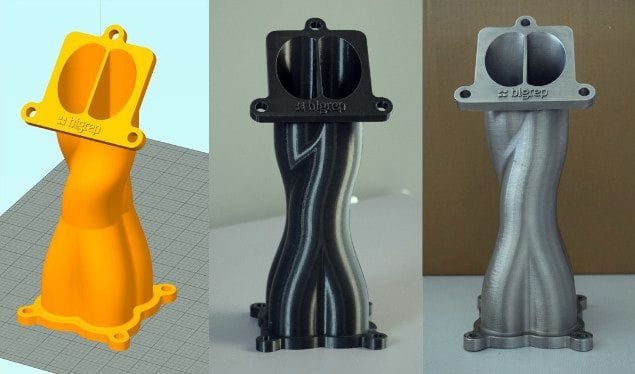
Prototyping has long been a key application for 3D printing, but here’s a new approach.
BigRep has been helping businesses do exactly that, particularly in very large sizes. You see, their line of 3D printers specializes in extremely large build volumes. Their BigRep One, for example, boasts a near 1 x 1 x 1m build volume, hence it’s name.
Due to the nature of the thermoplastic extrusion process and open-style machine they use, they are unable to 3D print very large objects in some engineering materials. But that’s ok, as there is still quite a bit of prototyping to do by simply 3D printing the large shapes.
The customers they are attracting recently tend to be industrial clients that produce large pieces, such as huge propellors, bathtubs or similar objects.
But these objects are typically made of metal.
That’s not something BigRep can 3D print. And if these clients happened to consider 3D printing prototypes using actual 3D metal printers, they’d be shocked at the price of their prints. 3D metal printing is a very expensive proposition, and it would be absurdly expensive to 3D print 1m sized objects in this manner only as prototypes.
The key to effective prototyping is to keep the costs and time as low as possible. That’s not happening with 3D metal printing, at least with current tech.
However, it seems that BigRep has come up with an intermediate method that gets a better approximation of the final part. How is this done? With metal plating.
They’ve partnered with Polymertal, an Israel-based company that provides, among other things, a metal plating and 3D smoothing service.
By metal plating parts, BigRep with their partner are able to create prototype parts that exhibit more properties of the final part – albeit not a complete set.
Such parts would be able to, for example, be exposed to chemicals that could otherwise damage the part, exhibit suitable surface characteristics, or provide appropriate electrical conductivity. However, you’d have to watch out for thermal challenges, as the thermoplastic interior of the plated part would still soften under sufficient heat, even though it would be somewhat stronger than thermoplastic alone.
I think this is an excellent idea to partially close the functional gap on prototyping, particularly with larger objects that would otherwise be financially infeasible to produce.
Via BigRep

